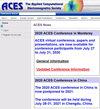Design and Analysis of High Gain Dual-polarized Dipole Antenna Based on Partially Reflective Metasurface
IF 0.6
4区 计算机科学
Q4 ENGINEERING, ELECTRICAL & ELECTRONIC
Applied Computational Electromagnetics Society Journal
Pub Date : 2021-01-01
DOI:10.47037/2021.aces.j.360918
引用次数: 1
Abstract
─ A partially reflective metasurface (PRMS) structure is proposed for dual-polarized dipole antenna with a high gain and wide broadband. Stable radiation patterns are realized by using quadrilateral bottom reflector. The phase bandwidth of PRMS structure reflection presented in this paper matches well with the antenna operating bandwidth. The gain of the dualpolarized antenna is improved to 10.2dBi at 1.8GHz by adjusting the size and height of PRMS structure. Meanwhile, the bandwidth is expanded (61.2%). Measured result demonstrates that the antenna has a stable beamwidth which is desirable in base station applications. Furthermore, the designed antenna can be used for communication in complex environment because of its excellent performance. Index Terms ─ Dual-polarize, high gain, partially reflective metasurface (PRMS), quadrilateral bottom reflector.基于部分反射超表面的高增益双极化偶极子天线设计与分析
─提出一种适用于高增益宽频带双极化偶极子天线的部分反射超表面(PRMS)结构。采用四边形底反射器实现了稳定的辐射方向图。本文提出的PRMS结构反射相位带宽与天线工作带宽吻合较好。通过调整PRMS结构的尺寸和高度,使双极化天线在1.8GHz时的增益提高到10.2dBi。同时,带宽也得到了扩展(61.2%)。实测结果表明,该天线具有稳定的波束宽度,适合基站应用。此外,所设计的天线具有优良的性能,可用于复杂环境下的通信。指标项─双偏振、高增益、部分反射超表面(PRMS)、四边形底反射器。
本文章由计算机程序翻译,如有差异,请以英文原文为准。
求助全文
约1分钟内获得全文
求助全文
来源期刊
CiteScore
1.60
自引率
28.60%
发文量
75
审稿时长
9 months
期刊介绍:
The ACES Journal is devoted to the exchange of information in computational electromagnetics, to the advancement of the state of the art, and to the promotion of related technical activities. A primary objective of the information exchange is the elimination of the need to "re-invent the wheel" to solve a previously solved computational problem in electrical engineering, physics, or related fields of study.
The ACES Journal welcomes original, previously unpublished papers, relating to applied computational electromagnetics. All papers are refereed.
A unique feature of ACES Journal is the publication of unsuccessful efforts in applied computational electromagnetics. Publication of such material provides a means to discuss problem areas in electromagnetic modeling. Manuscripts representing an unsuccessful application or negative result in computational electromagnetics is considered for publication only if a reasonable expectation of success (and a reasonable effort) are reflected.
The technical activities promoted by this publication include code validation, performance analysis, and input/output standardization; code or technique optimization and error minimization; innovations in solution technique or in data input/output; identification of new applications for electromagnetics modeling codes and techniques; integration of computational electromagnetics techniques with new computer architectures; and correlation of computational parameters with physical mechanisms.

 求助内容:
求助内容: 应助结果提醒方式:
应助结果提醒方式:


